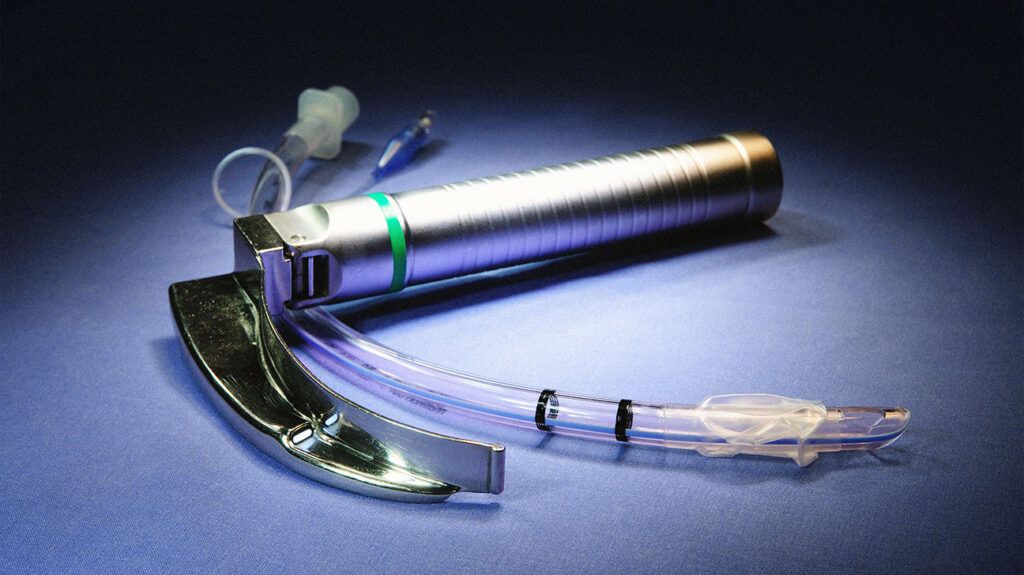A direct laryngoscopy is a procedure that allows doctors to see the larynx, also known as the voice box. Viewing the larynx may help diagnose or treat a condition involving the throat or voice box.
The larynx, or voice box, is the tube that allows someone to make sounds. It also lets air pass from the throat to the trachea, known as the windpipe.
Doctors may need to view the larynx for various reasons, including diagnosing and treating different conditions.
The doctor uses a flexible or rigid laryngoscope inserted into the mouth or nose to perform a direct laryngoscopy. Although the scopes are different, they both allow for visualizing the larynx directly.
The article covers a direct laryngoscopy, including indications, preparation, and risks.

A direct laryngoscopy involves a procedure to view the larynx, which sits
The doctor inserts a laryngoscope into the mouth or nose to view the larynx without a mirror during the procedure. Different types of laryngoscopes are available, including those with a camera on the end.
A doctor performs a direct laryngoscopy for several reasons,
- To examine the larynx: Examination of the larynx is helpful to find the cause of difficulty swallowing or throat pain and determine the damage from a laryngeal injury.
- To remove a foreign body: If something becomes stuck in the larynx, a direct laryngoscopy may help remove it.
- For intubation: Doctors
also use direct laryngoscopy to intubate an individual. Intubation involves passing a breathing tube into the windpipe. Individuals may require intubation before surgery or in emergencies to help a person breathe. Direct laryngoscopy allows for visualization of the vocal cords, which are the anatomic landmarks that help facilitate intubation. - To remove a vocal cord growth: Direct laryngoscopy is also
helpful to remove a vocal cord polyp, cyst, or lesion. - To take a biopsy: During a direct laryngoscopy, the doctor may take a biopsy, which
involves removing tissue from the throat or airway to check for cancer cells.
Before a direct laryngoscopy, a person should follow the doctor’s instructions on preparation before the procedure. Specific guidelines
The doctor may ask an individual to stop taking certain medications, supplements, and vitamins a few days before the procedure. Instructions may include not eating or drinking anything for several hours beforehand.
A doctor often performs a direct laryngoscopy as an outpatient procedure. This means a person does not have to stay in the hospital overnight.
The individual lies on their back on a table or bed. The clinician sprays numbing medication into the throat and nose. If the procedure is under general anesthesia, the person receives sedation often through an IV.
The exact technique of how the clinician inserts the scope
Laryngoscopies for removals, such as polyps or foreign objects, may require access through the mouth.
The clinician views the larynx and may remove a tissue sample for a biopsy or a foreign object if present.
Depending on the reason for the direct laryngoscopy, doctors may provide immediate results. For example, in a foreign body removal, an individual may know immediately if the procedure was successful. In other cases, such as when the doctor performs a biopsy, the laboratory analyzes the tissue sample, and results may take days.
After the procedure, the physician explains if and when to come back for a follow-up appointment.
As with any procedure, there are risks with a direct laryngoscopy. The possible combinations may depend on the type of laryngoscope a doctor uses. Risks
- bleeding
- infection
- sore throat
- hoarseness
- adverse reaction to anesthesia
- injury to the larynx
Here are some common questions about direct laryngoscopies.
How is a direct laryngoscopy performed?
A clinician usually performs a direct laryngoscopy after the individual receives anesthesia or numbing medication in the back of the throat.
The
The clinician advances the laryngoscope anteriorly to view the vocal cords. In some cases, they will remove a tissue sample.
What is the difference between a direct and indirect laryngoscopy?
Direct laryngoscopy allows a doctor to view the larynx directly in a straight line.
An
How long is a direct laryngoscopy with biopsy?
The amount of time it takes to perform a biopsy through a direct laryngoscopy may vary depending on whether the doctors perform the procedure under general anesthesia. For instance, using a direct flexible laryngoscope with local anesthesia typically takes
When the physician uses a rigid laryngoscope under general anesthesia, laryngoscopy takes longer due to administering the anesthetic and then recovering from the sedation.
Is a laryngoscopy procedure painful?
Before the procedure, a clinician usually sprays numbing medication in the throat and nose to decrease discomfort.
If performed under general anesthesia, the person is asleep and does not feel pain.
A direct laryngoscopy is a procedure that allows the doctor to view the larynx, or voice box, in a straight line. The procedure helps diagnose conditions that affect the larynx and throat.
Direct laryngoscope may include taking a biopsy and also helps facilitate intubation for surgery or emergency treatment.
Risks with a direct laryngoscope can include bleeding, infection, and damage to the larynx.
